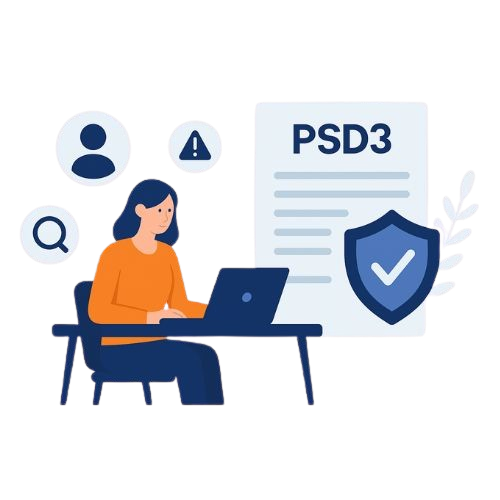Compliance Under PSD3 for High-Risk Transactions

New rules under PSD3 come with a host of modifications for businesses that handle complex payment activities. The latest guidelines aim to improve accountability and tighten standards, a situation that demands careful adjustments from companies managing high-risk transactions. This article takes a close look at the changes and offers a practical approach for those looking to align their operations with the new requirements.
Understanding the PSD3 Framework
PSD3 introduces adjustments that go beyond simple updates and impact a wide range of payment practices. With a detailed emphasis on transparency and transaction accuracy, the regulation requires businesses to revise protocols related to customer validation and record keeping.
Many firms operating in sectors that experience elevated risk levels must revisit their current systems. Minor lapses can lead to financial penalties or reputational setbacks. Industry players must now work smarter to support precise recordkeeping and thorough documentation of payment flows. These updates imply not only reviewing technological setups but also rethinking how teams communicate and manage risks.
Areas of Focus in the New Compliance Measures
Customer Verification and Record Keeping
At the heart of PSD3 is the need for improved methods to verify customers and capture transaction details. Companies are encouraged to adopt methods that provide an accurate audit trail without disrupting everyday operations. Traditional verification methods might fall short under the new guidelines, and businesses should look at fresh ways to confirm identities while reducing opportunities for mistakes.
The adjustment in recording practices involves revisiting how transaction data is stored and reviewed. Inadequate documentation can lead to difficulties during audits or regulatory reviews. As such, revising internal data practices should be a top priority for organizations dealing with high-risk transactions.
Monitoring Transactions and Managing Risks
With PSD3, monitoring becomes more than just a formality—it is a crucial part of everyday operations. Every payment processed demands a careful check to confirm that it aligns with regulatory requirements. The introduction of stricter oversight means that all activities need to be tracked more meticulously than before.
The focus in this area is not merely on detecting errors but also on preventing them. Companies engaged in complex payment operations are advised to upgrade their systems so all transactions pass through a well-defined validation process. Advanced monitoring capabilities can help spot anomalies before they turn into larger issues. For businesses that work through a high-risk payment gateway, adapting to these new controls will affect how systems are set up and maintained.
Steps to Adapt
- Conduct a Thorough Review of Current Procedures
A critical examination of existing practices is necessary to determine areas that need changes. An assessment of transaction documentation, customer validation, and risk assessment procedures is the first step. - Revise Data Storage Methods
Since the new rules dictate that detailed records must be maintained, upgrade data management systems. Innovative recordkeeping can prevent discrepancies during regulatory checks. - Implement Advanced Monitoring Tools
Invest in tools that automatically track transactions while providing an audit trail. Regular reviews of these tools add a layer of security. - Invest in Regular Staff Training
Schedule training sessions to help all team members understand the latest compliance requirements and apply them in daily tasks. - Develop a Long-Term Risk Management Plan
Craft a strategy to address and minimize potential risks, detailing steps to resolve issues during regular operations.
The Road Ahead for High-Risk Payment Handlers
Adapting to PSD3 is a significant undertaking, especially for industries handling complex transactions. Although the regulatory changes may initially seem overwhelming, this transition offers a chance to improve internal operations. By focusing on better customer validation, precise transaction monitoring, and comprehensive staff training, businesses can not only align with PSD3 but also prepare for future shifts in payment regulations.
A high-risk merchant account operator, for example, can benefit from these process improvements by gaining clearer insights into transaction flows and potential vulnerabilities. Such proactive measures translate into reduced exposure to risks and a stronger operational framework.
Final Thoughts
The evolving regulatory environment requires constant vigilance. As industry standards adjust to emerging challenges, staying well-informed and ready to adapt will help companies maintain compliance without compromising service quality. Regularly reviewing compliance measures and embracing changes, although challenging, may lead to more efficient business practices and greater resilience in the face of change.